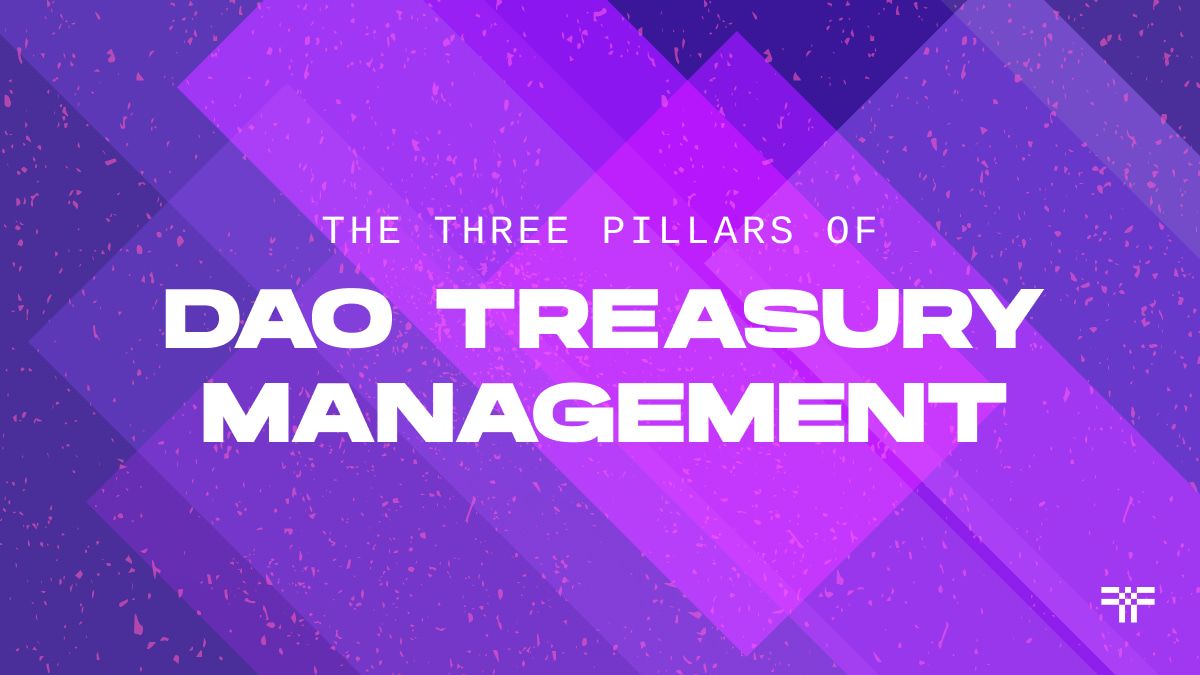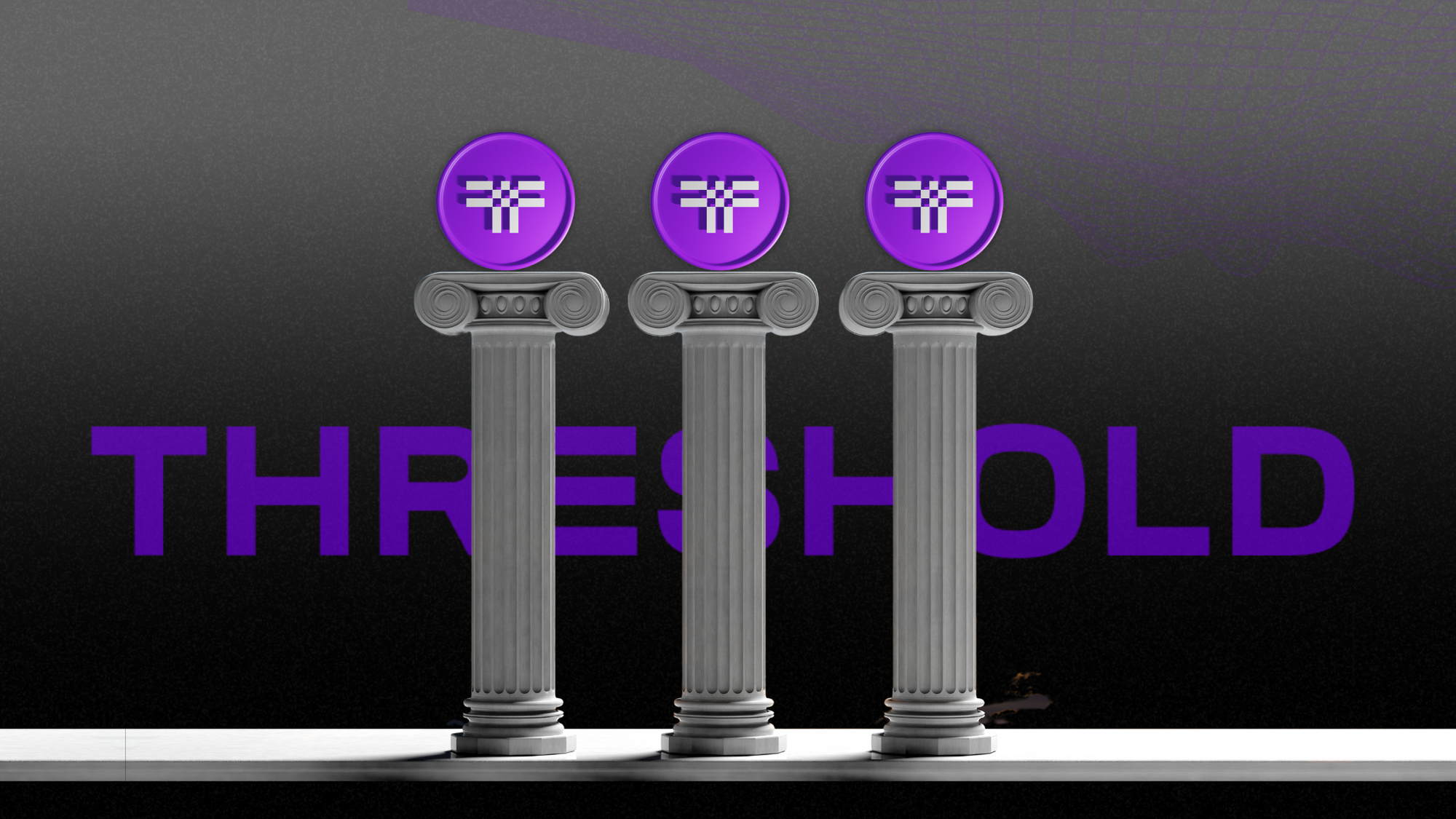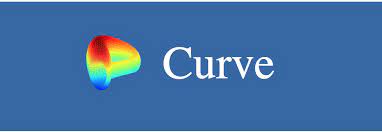Three Pillars of DAO Treasury Management

Effective treasury management essentially boils down to one fundamental principle: defending against volatility. What is meant by volatility in this context is simply how frequently and dramatically the net worth of all assets contained within a treasury rises and falls. Too much volatility in a treasury makes it very difficult for a DAO to create any long-term plans and goals that require resources, since what resources will be available in the future is uncertain.

There are 3 pillars of DAO Treasury Management that allow the Threshold Treasury Guild to successfully navigate the risk presented by too much volatility:
- Diversification
- Liquidity
- Reporting/Transparency
DIVERSIFICATION
Just like any other organization that has to manage their finances, you can think of a DAO as having a balance sheet. Anyone who has taken an accounting class will remember that balance sheets are divided into three sections: assets, liabilities, and equity.
Assets: There are a number of things that exist within a DAO treasury that are categorized as assets. First, there are risk assets. This includes any assets that are not stable against the dollar (For example, ETH).
Second, there are stable assets. As the name implies, these are assets that are stable against the dollar.
A third, more complicated type of asset are these funny things called LP tokens (liquidity pool tokens). When two assets are placed into a liquidity pool, the depositor receives LP tokens that represent their share of the pool. LP tokens are essentially a claim on the underlying fluctuating assets.
Liabilities: Liabilities include any loans made to a DAO. At present, the Threshold DAO has a loan, and therefore, liability. (The loan is denominated in ETH and was used to seed the T / ETH liquidity pool.)
Equity: Many people make the assumption that governance tokens should be grouped under assets.
While at present there is an abundance of governance tokens, theoretically worth millions of dollars, the reality is that if these governance tokens were converted to ETH, they would not trade for nearly what they are worth. The reason for this is simply because markets are not that deep: there is very little liquidity. In effect, governance tokens in a DAO are not assets; rather, they are a form of equity. If kept within a treasury, governance tokens should be considered non-circulating tokens. As soon as governance tokens are taken out of a treasury, they become part of the circulating supply.
While tokens may show up as an asset on a DAO member’s personal balance sheet, for the DAO itself, tokens show up as equity.
One exception to this is when a DAO treasury also includes governance tokens which aren’t related directly to the DAO itself. In this scenario, these types of governance tokens would be considered risk assets.
When you want to know what state your treasury is in at any given moment the formula is simple:
Assets = Liabilities + Equity
But what about the state you are trying to get to?

The Threshold Treasury Guild has 3 main goals:
- Increase the value of our work token (T)
- Reduce treasury volatility (not the upside, of course, but downside volatility)
- Ensure that the treasury exceeds the annual inflation rate in yield
To meet these goals, most treasuries need to undergo three stages:
Bootstrapping stage: As a DAO with pre-existing assets, Threshold was luckily able to skip this stage.
Diversification stage: This is the stage that the Threshold treasury is in currently. Accomplishing this is pretty straightforward; simply accrue more assets. The more assets, the less negative volatility. In addition, the more assets on the Treasury balance sheet, the more T is worth, since the value is directly and indirectly correlated to the health of the treasury. While it may be straightforward, this doesn’t mean that getting more assets isn’t challenging. There are 3 separate means by which Threshold can accrue assets:
a) Develop products that provide value and generate fees
This is well underway. tBTC v2 will accrue fees. thUSD will accrue fees. Both drive value to the DAO. But they have not yet been brought to market, and so focus needs to remain on alternatives.
b) Lend or use assets to generate yield
It is possible to take ETH and set it up so that we have T / ETH. It’s also possible to buy CRV and CVX and use them to generate yield on these products. There are many ways to go about doing that, but they all don’t make sense to pursue until our ‘growth stage’, which will be defined below. The DAO is not yet at this stage, because the DAO does not yet have assets with which to generate yield. And so, only a single option remains.
c) Sell T into other assets
Here lies the challenge: How does one sell T and increase the value of T? Ultimately, this comes down to markets. Whenever pressure is introduced to a market, the market responds. The less liquidity a market has, the more sell pressure relative to that liquidity can impact the price.
Growth stage: Threshold's treasury will not enter this stage until we have effectively met the challenges of the diversification stage. The growth stage is when attention will focus on ensuring that the treasury exceeds the annual inflation rate in yield. University endowments undergo a similar process: each year, universities figure out how much money they need to cover their expenses, and then they try to exceed their costs so that they can keep growing their treasuries.
This concludes the overview of how the first pillar, diversification, works. Which brings us to the second pillar.
LIQUIDITY
A certain amount of liquidity is necessary in order to diversify without hurting the price of T. At present, roughly $10 million exists within the Curve pool. Approximately $5MM of that exists in T work tokens (50%), and approximately $5MM exists as ETH. This means that only $5MM in ETH could ever be purchased in one transaction. Because of how AMMs are made, the larger the order made, the greater the financial punishment.
The current strategy is to increase liquidity so that when selling T becomes necessary to diversify the Threshold Treasury, it can be done without hurting those who hold T.
If, for example, the Curve pool contained $100MM in liquidity as opposed to $10MM, purchasing $5MM worth of ETH would cause much less impact. This is why liquidity is one of the main pillars of treasury management: a treasury cannot effectively diversify without adequate liquidity.
Three available methods for building liquidity are borrowing, renting, or buying; the Threshold Treasury utilizes all three.
Borrowing: Threshold is already borrowing ETH, and the DAO was fortunate enough to do so for a share of the CRV and CVX rewards. The only current expense related to the treasury's ETH are the fees generated on the liquidity pool.
Renting: Renting liquidity is where matters get complicated. To understand how to rent liquidity you need to become familiar with two concepts that are entirely crypto-native: Curve and Rewards. These concepts don’t exist outside of crypto. There are similar proxies, such as market makers on centralized exchanges, but there is no exact comparison to a non-crypto organization when it comes to renting liquidity.

Curve: Curve is an automated market maker, similar to Uniswap, but with a slightly different bonding curve and price efficiencies. In addition, Curve provides an aspect of governance. It’s the governance component of Curve that allows - albeit in an indirect way - for the renting of liquidity.
CRV inflation: curve has a huge amount of inflation and is a really difficult product to manage. If someone doesn’t know what they are doing, they can easily get diluted. Curve has a 300-year inflation schedule that levels out in 10-20 years. So, for the next 10 years, at a minimum, there will be very aggressive inflation.
But who suffers the inflation? The way Curve works is that users take their Curve and lock it into a staking contract. The staking contract requires that it be locked from anywhere between 1 week to 4 years. In exchange for locking into a staking contract, users receive a product called ‘veCRV’ (vote escrowed Curve.) veCRV allows users to vote on liquidity pools. The longer someone locks their staking contract, the more veCRV they receive, and thereby hold more voting power. There are many potential liquidity pools, one of which is T, Threshold’s governance token. Vote weight determines how much inflation, per day, goes into each liquidity pool.
Curve gauge: as an example, imagine that there are 100 votes. Imagine that the T / ETH pool gets 1 vote. This would mean that 1% of the daily emissions for Curve will go to those who are providing liquidity for tETH. By getting votes, the Threshold DAO is essentially subsidizing people to provide liquidity for the treasury.
In the beginning, this market was fairly organic. People would buy Curve, they would receive their veCRV, and they would vote for the company, project, DAO or native token or protocol that they wanted to support. Now, things are more complicated.
Buying: Liquidity can be bought two ways. The first way is most commonly referred to as POL (protocol-owned liquidity), which requires us to diversify the DAO's treasury into liquidity tokens that are more stable than our governance token, such as ETH, USDC, or DAI. These liquidity tokens allow us to connect our market to global markets through a liquidity pool.
The other way to "buy liquidity" is through what I refer to as POG (protocol-owned governance). We increase our POG when we buy governance tokens (such as CRV, CVX, etc.) rather than liquidity tokens. POG allows us to direct incentives (such as Curve's protocol inflation) to liquidity providers for our liquidity pool. While challenging, with sufficient data and a strong enough model, we can optimize our liquidity buying strategy by calculating the cost/benefit of the two strategies.
REPORTING/TRANSPARENCY
The third and final pillar of DAO treasury management is Reporting and Transparency. Transparency comes more easily with crypto than reporting in the corporate world—because the data is available on a public blockchain where all the world can see. MakerDAO has been an industry leader when it comes to reporting and transparency, yet even they can improve by better archiving their historical reports and by opening up their tools and financial controls.
If your DAO is doing great, there is no downside to loud and transparent reporting. A DAO should want its community and the world to see how things are going - good or bad. Transparency is a fundamental tenet of a DAO that also applies to reporting.
If your Treasury is well-managed, the more people are able to see this, and the healthier that transparency is for the DAO.


